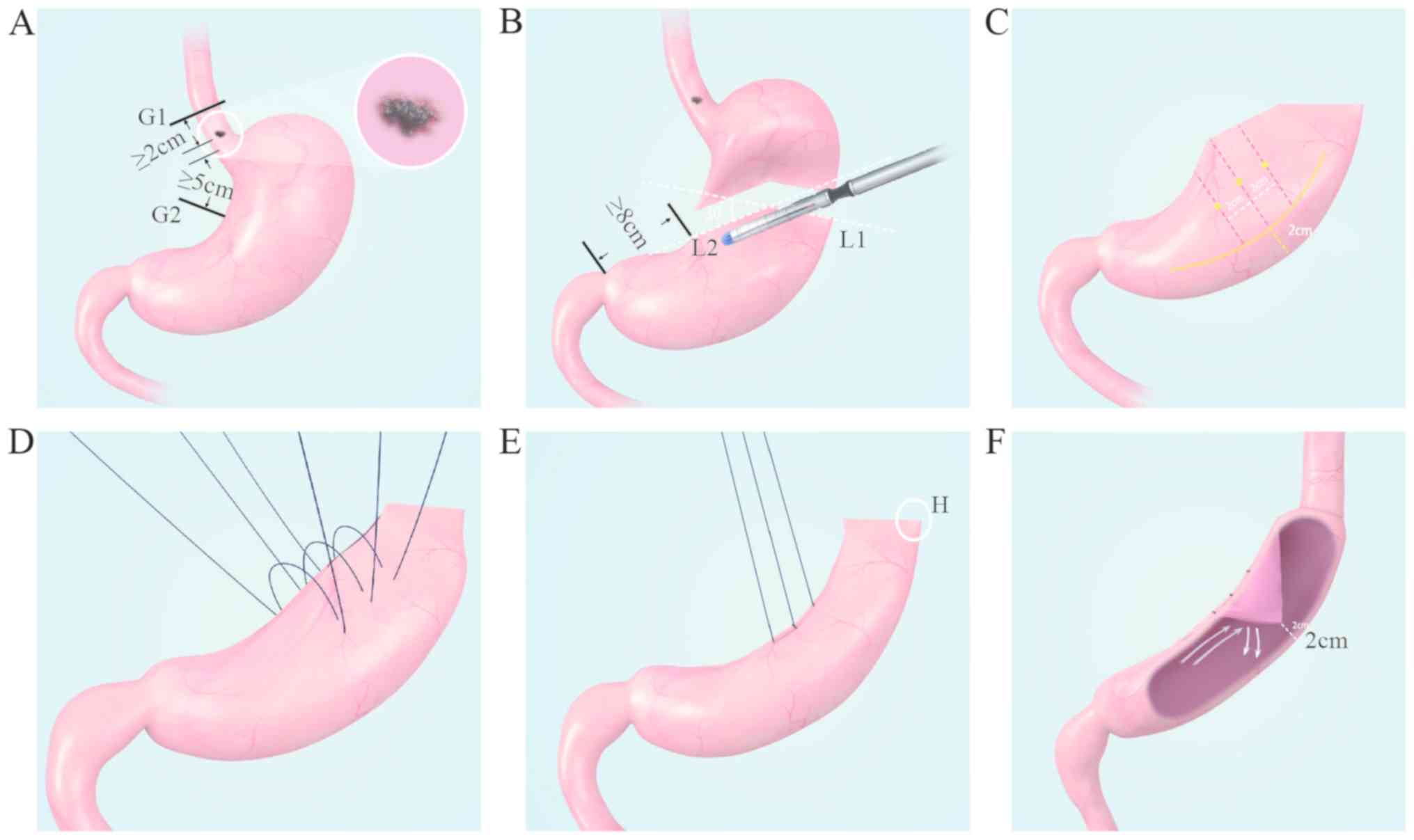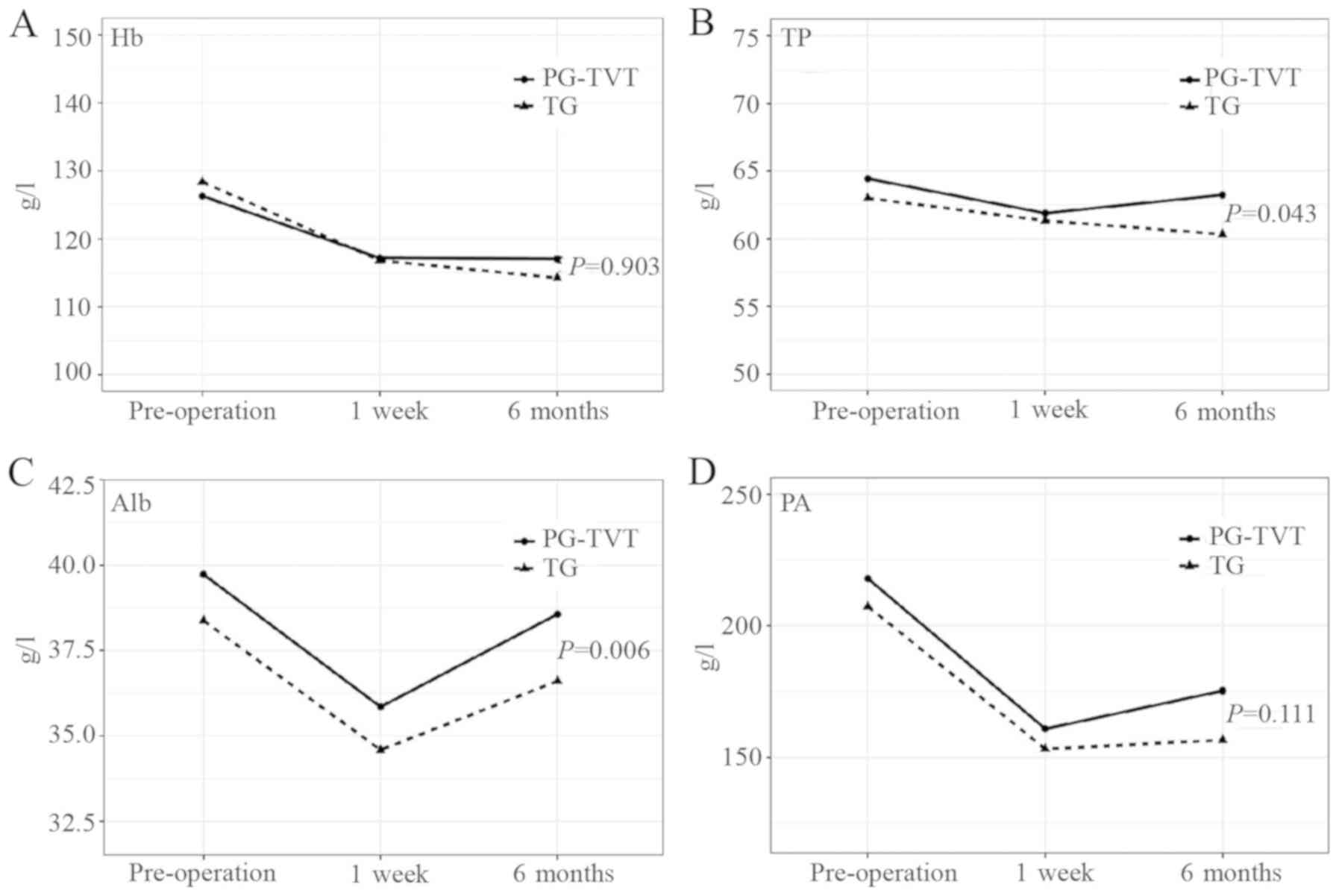|
1
|
Brierley JD, Gospodarowicz MK and
Wittekind C (eds): TNM classification of malignant tumours. 8th
edition. Oxford, Wiley Blackwell, 2017.
|
|
2
|
Buas MF and Vaughan TL: Epidemiology and
risk factors for gastroesophageal junction tumors: Understanding
the rising incidence of this disease. Semin Radiat Oncol. 23:3–9.
2013.PubMed/NCBI View Article : Google Scholar
|
|
3
|
Devesa SS, Blot WJ and Fraumeni JF Jr:
Changing patterns in the incidence of esophageal and gastric
carcinoma in the United States. Cancer. 83:2049–2053.
1998.PubMed/NCBI
|
|
4
|
Kim JJ: Epidemiology of gastroesophageal
junction adenocarcinoma in Korea. J Gastric Cancer. 18:328–338.
2018.PubMed/NCBI View Article : Google Scholar
|
|
5
|
Blaser MJ and Saito D: Trends in reported
adenocarcinomas of the oesophagus and gastric cardia in Japan. Eur
J Gastroenterol Hepatol. 14:107–113. 2002.PubMed/NCBI View Article : Google Scholar
|
|
6
|
Zhou Y, Zhang Z, Zhang Z, Wu J, Ren D, Yan
X, Wang Q, Wang Y, Wang H, Zhang J, et al: A rising trend of
gastric cardia cancer in Gansu Province of China. Cancer Lett.
269:18–25. 2008.PubMed/NCBI View Article : Google Scholar
|
|
7
|
Liang D, Liang S, Jin J, Li D, Shi J and
He Y: Gastric cancer burden of last 40 years in North China (Hebei
Province): A population-based study. Medicine (Baltimore).
96(e5887)2017.PubMed/NCBI View Article : Google Scholar
|
|
8
|
Siewert JR and Stein HJ: Classification of
adenocarcinoma of the oesophagogastric junction. Br J Surg.
85:1457–1459. 1998.PubMed/NCBI View Article : Google Scholar
|
|
9
|
Isgüder AS, Nazli O, Tansug T, Bozdag AD
and Onal MA: Total gastrectomy for gastric carcinoma.
Hepatogastroenterology. 52:302–304. 2005.PubMed/NCBI
|
|
10
|
Harrison LE, Karpeh MS and Brennan MF:
Total gastrectomy is not necessary for proximal gastric cancer.
Surgery. 123:127–130. 1998.PubMed/NCBI
|
|
11
|
Katai H, Sano T, Fukagawa T, Shinohara H
and Sasako M: Prospective study of proximal gastrectomy for early
gastric cancer in the upper third of the stomach. Br J Surg.
90:850–853. 2003.PubMed/NCBI View
Article : Google Scholar
|
|
12
|
Shiraishi N, Adachi Y, Kitano S, Kakisako
K, Inomata M and Yasuda K: Clinical outcome of proximal versus
total gastrectomy for proximal gastric cancer. World J Surg.
26:1150–1154. 2002.PubMed/NCBI View Article : Google Scholar
|
|
13
|
Solerio D, Camandona M, Gasparri G,
Casalegno PA and Dei Poli M: Adenocarcinoma of the cardia: Surgical
strategies compared. Tumori. 89 (4 Suppl):S143–S148.
2003.PubMed/NCBI
|
|
14
|
Aitaliev MS, Zemlianoi VP and
Nepomniashchaia SL: Evaluation of surgical traumaticity of standard
and extended surgical procedures in cancer of a proximal part of
the stomach. Khirurgiia. (Mosk):23–26. 2005.PubMed/NCBI(In Russian).
|
|
15
|
Katsoulis IE, Robotis JF, Kouraklis G and
Yannopoulos PA: What is the difference between proximal and total
gastrectomy regarding postoperative bile reflux into the
oesophagus? Dig Surg. 23:325–330. 2006.PubMed/NCBI View Article : Google Scholar
|
|
16
|
An JY, Youn HG, Choi MG, Noh JH, Sohn TS
and Kim S: The difficult choice between total and proximal
gastrectomy in proximal early gastric cancer. Am J Surg.
196:587–591. 2008.PubMed/NCBI View Article : Google Scholar
|
|
17
|
Ronellenfitsch U, Najmeh S, Andalib A,
Perera RM, Rousseau MC, Mulder DS and Ferri LE: Functional outcomes
and quality of life after proximal gastrectomy with
esophagogastrostomy using a narrow gastric conduit. Ann Surg Oncol.
22:772–779. 2015.PubMed/NCBI View Article : Google Scholar
|
|
18
|
Tokunaga M, Ohyama S, Hiki N, Hoshino E,
Nunobe S, Fukunaga T, Seto Y and Yamaguchi T: Endoscopic evaluation
of reflux esophagitis after proximal gastrectomy: Comparison
between esophagogastric anastomosis and jejunal interposition.
World J Surg. 32:1473–1477. 2008.PubMed/NCBI View Article : Google Scholar
|
|
19
|
Wen L, Chen XZ, Wu B, Chen XL, Wang L,
Yang K, Zhang B, Chen ZX, Chen JP, Zhou ZG, et al: Total vs
proximal gastrectomy for proximal gastric cancer: A systematic
review and meta-analysis. Hepatogastroenterology. 59:633–640.
2012.PubMed/NCBI View
Article : Google Scholar
|
|
20
|
Hsu CP, Chen CY, Hsieh YH, Hsia JY, Shai
SE and Kao CH: Esophageal reflux after total or proximal
gastrectomy in patients with adenocarcinoma of the gastric cardia.
Am J Gastroenterol. 92:1347–1350. 1997.PubMed/NCBI
|
|
21
|
Kamikawa Y, Kobayashi T and Kamiyama S: A
new procedure of esophagogastrostomy to prevent reflux following
proximalgastrectomy (in Japanese). Shoukakigeka. 24:1053–1060.
2001.
|
|
22
|
Hayami M, Hiki N, Nunobe S, Mine S, Ohashi
M, Kumagai K, Ida S, Watanabe M, Sano T and Yamaguchi T: Clinical
outcomes and evaluation of laparoscopic proximal gastrectomy with
double-flap technique for early gastric cancer in the upper third
of the stomach. Ann Surg Oncol. 24:1635–1642. 2017.PubMed/NCBI View Article : Google Scholar
|
|
23
|
Tanioka T, Waratchanont R, Fukuyo R, Saito
T, Umebayashi Y, Kanemoto E, Kobayashi K, Nakagawa M and Inokuchi
M: Surgical and nutritional outcomes of laparoscopic proximal
gastrectomy versus total gastrectomy: A meta-analysis. Surg Endosc.
34:1061–1069. 2020.PubMed/NCBI View Article : Google Scholar
|
|
24
|
In H, Solsky I, Palis B, Langdon-Embry M,
Ajani J and Sano T: Validation of the 8th edition of the AJCC TNM
staging system for gastric cancer using the national cancer
database. Ann Surg Oncol. 24:3683–3691. 2017.PubMed/NCBI View Article : Google Scholar
|
|
25
|
Japanese Gastric Cancer Association.
Japanese gastric cancer treatment guidelines 2010 (ver. 3). Gastric
Cancer. 14:113–123. 2011.PubMed/NCBI View Article : Google Scholar
|
|
26
|
Giacopuzzi S, Bencivenga M, Weindelmayer
J, Verlato G and de Manzoni G: Western strategy for EGJ carcinoma.
Gastric Cancer. 20 (Suppl 1):S60–S68. 2017.PubMed/NCBI View Article : Google Scholar
|
|
27
|
Di Leo A and Zanoni A: Siewert III
adenocarcinoma: Treatment update. Updates Surg. 69:319–325.
2017.PubMed/NCBI View Article : Google Scholar
|
|
28
|
Aoki M, Saka M, Morita S, Fukagawa T and
Katai H: Afferent loop obstruction after distal gastrectomy with
Roux-en-Y reconstruction. World J Surg. 34:2389–2392.
2010.PubMed/NCBI View Article : Google Scholar
|
|
29
|
Shaw MJ, Talley NJ, Beebe TJ, Rockwood T,
Carlsson R, Adlis S, Fendrick AM, Jones R, Dent J and Bytzer P:
Initial validation of a diagnostic questionnaire for
gastroesophageal reflux disease. Am J Gastroenterol. 96:52–57.
2001.PubMed/NCBI View Article : Google Scholar
|
|
30
|
Son MW, Kim YJ, Jeong GA, Cho GS and Lee
MS: Long-term outcomes of proximal gastrectomy versus total
gastrectomy for upper-third gastric cancer. J Gastric Cancer.
14:246–251. 2014.PubMed/NCBI View Article : Google Scholar
|
|
31
|
Kosuga T, Hiki N, Nunobe S, Ohashi M,
Kubota T, Kamiya S, Sano T and Yamaguchi T: Does the
single-stapling technique for circular-stapled esophagojejunostomy
reduce anastomotic complications after laparoscopic total
gastrectomy? Ann Surg Oncol. 22:3606–3612. 2015.PubMed/NCBI View Article : Google Scholar
|
|
32
|
Shim JH, Oh SI, Yoo HM, Jeon HM, Park CH
and Song KY: Short-term outcomes of laparoscopic versus open total
gastrectomy: A matched-cohort study. Am J Surg. 206:346–351.
2013.PubMed/NCBI View Article : Google Scholar
|
|
33
|
Kim JH, Park SS, Kim J, Boo YJ, Kim SJ,
Mok YJ and Kim CS: Surgical outcomes for gastric cancer in the
upper third of the stomach. World J Surg. 30:1870–1878.
2006.PubMed/NCBI View Article : Google Scholar
|
|
34
|
Ariyasu H, Takaya K, Tagami T, Ogawa Y,
Hosoda K, Akamizu T, Suda M, Koh T, Natsui K, Toyooka S, et al:
Stomach is a major source of circulating ghrelin, and feeding state
determines plasma ghrelin-like immunoreactivity levels in humans. J
Clin Endocrinol Metab. 86:4753–4758. 2001.PubMed/NCBI View Article : Google Scholar
|
|
35
|
Castañeda TR, Tong J, Datta R, Culler M
and Tschöp MH: Ghrelin in the regulation of body weight and
metabolism. Front Neuroendocrinol. 31:44–60. 2010.PubMed/NCBI View Article : Google Scholar
|
















